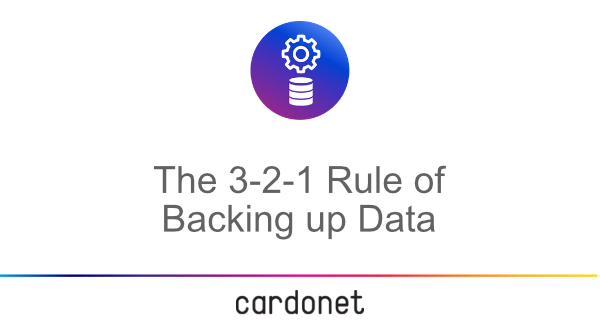
Remember: It’s important that your backups all have the same data and that the data is current enough to be useful. This means you won’t suffer a catastrophic loss of data just because 1 backup is corrupted. This approach gives you redundancy in your backups. The “3” in 3-2-1 backups means keeping 3 copies of your data. In a world where data loss and ransomware attacks can cripple a business, that is a major upside. Simply put: a 3-2-1 backup strategy reduces your chances of losing your data completely. If there is a disaster or complete loss of data at your primary site, you still have your offsite data. If one storage medium goes obsolete, there is another you can use. If one copy of your data is corrupted, you have 2 more to fall back on. The primary benefits of 3-2-1 backups are resilience and risk mitigation.

Keeping multiple copies on different physical media and different geographical locations, you greatly reduce the risk of a single catastrophic event wiping out your data. The rule enables you to eliminate single points of failures in your backups. Keep at least 1 copy of the data offsite.Save data on 2 different physical media.The idea behind the 3-2-1 backup rule is simple: Here, we’ll look at the benefits of the 3-2-1 backup rule, the details behind the concept, and how you can use it to your advantage. A rock-solid backup strategy is the cornerstone of disaster recovery and business continuity.īut, what backup strategy should you use? How about one that has been advocated for by a United States Computer Readiness Team paper and proven by years of use within the tech industry? The 3-2-1 backup rule fits that description to a T. Because of the risks associated with data loss and downtime, reliable backups are a must have for modern businesses. Everything from ransomware to human error to failing hardware can lead to lost data and productivity. Unfortunately, there’s no one-size-fits all solution to preventing data loss and downtime. Additionally, Dell reported that the average cost of downtime in 2019 was $810,018 USD.

For example, IBM’s Cost of a Data Breach Report 2020 found that the average cost of a single lost or stolen record was $146 USD. Downtime and data loss can wreak havoc on businesses, and there are statistics abound to prove it.


 0 kommentar(er)
0 kommentar(er)
